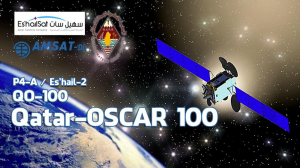SM7WSJ
Well-Known Member
Tänkte att det kanske kunde vara av intresse för någon att se var Satellitdelen inom amatöradiotjänsten är på väg...
Måldokument från AMSAT-NA https://www.amsat.org/wordpress/wp-content/uploads/2021/06/AMSAT-Strategic-Plan.pdf
Som en liten snabb sammanställning kan jag nämna att dom här små cubesat med FM är väldigt populära i staterna. Där kör man expeditioner till olika rutor. Det blir väldigt snabba kontakter i contest stil och AO-91 används för närvarande. För lite fina SSB/CW kontakter mot staterna är RS-44 ett säkert kort.
För dom som vill sitta och lång prata över en geostationär transponder har vi QO-100. Täcker över 100 olika länder.
https://eshail.batc.org.uk/nb/ (går att lyssna på transpondern)
Det är ett stort antal satelliter att välja på, så man får koncentrera sig på någon eller några. På länken nedan kan man se vilka som är mest använda.
https://www.amsat.org/status/
mvh Håkan SM7WSJ
Måldokument från AMSAT-NA https://www.amsat.org/wordpress/wp-content/uploads/2021/06/AMSAT-Strategic-Plan.pdf
Som en liten snabb sammanställning kan jag nämna att dom här små cubesat med FM är väldigt populära i staterna. Där kör man expeditioner till olika rutor. Det blir väldigt snabba kontakter i contest stil och AO-91 används för närvarande. För lite fina SSB/CW kontakter mot staterna är RS-44 ett säkert kort.
För dom som vill sitta och lång prata över en geostationär transponder har vi QO-100. Täcker över 100 olika länder.
https://eshail.batc.org.uk/nb/ (går att lyssna på transpondern)
Det är ett stort antal satelliter att välja på, så man får koncentrera sig på någon eller några. På länken nedan kan man se vilka som är mest använda.
https://www.amsat.org/status/
mvh Håkan SM7WSJ
Last edited:

